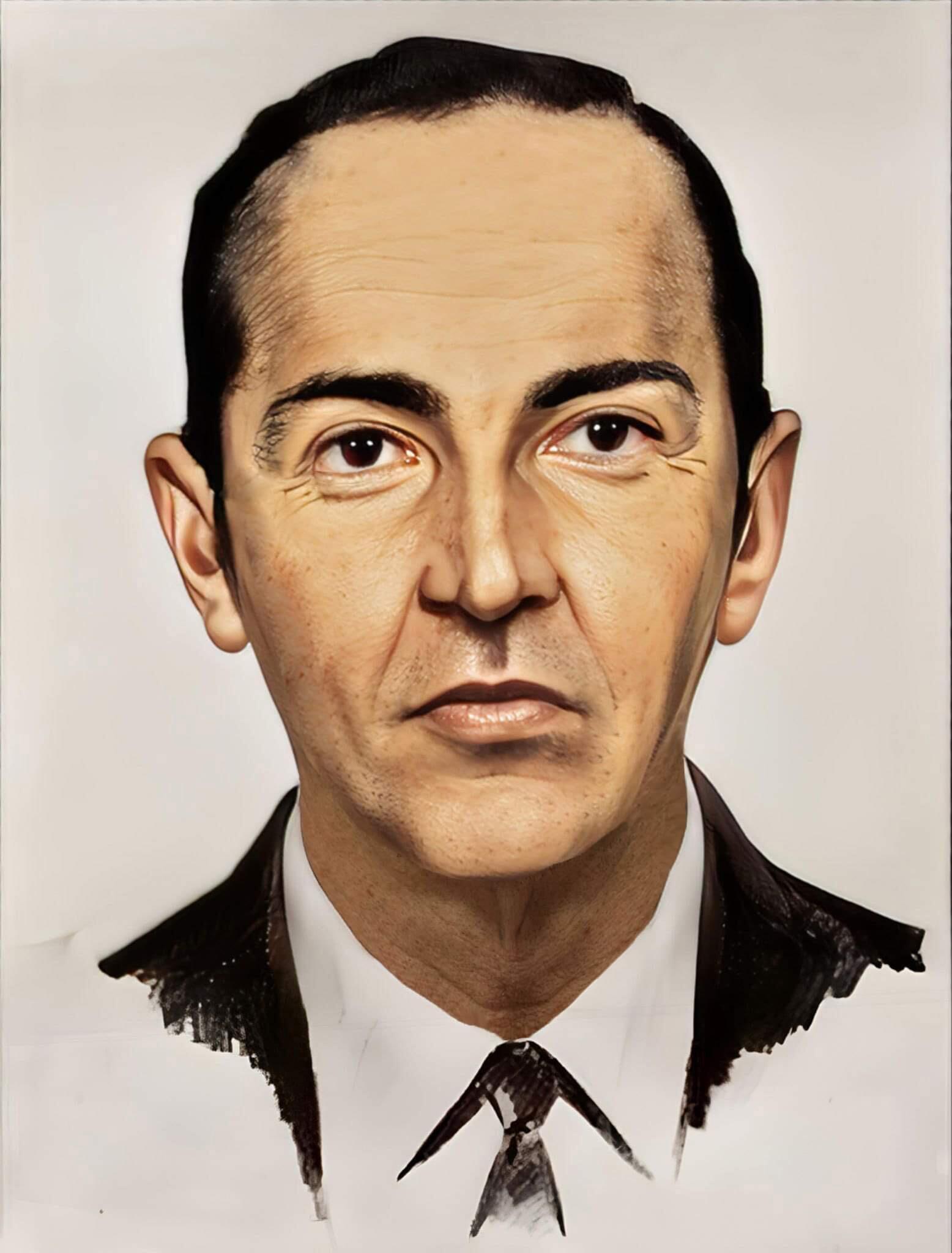-
Content
1,696 -
Joined
-
Last visited
-
Days Won
22 -
Feedback
0%
Content Type
Profiles
Forums
Calendar
Dropzones
Gear
Articles
Fatalities
Stolen
Indoor
Help
Downloads
Gallery
Blogs
Store
Videos
Classifieds
Everything posted by olemisscub
-
Dude, YOU are the one imparting some sort of significance to that term and acting like you know something from it, not us. We are only saying he could have picked it up from anywhere, which is 100% true.
-
By this logic, if Hahneman and Cooper both referred to food as “meat and potatoes”, then that would mean that “meat and potatoes” was a term that they both picked up in the military….
-
Not a SINGLE person reading this, not even your sole ally on this board, is buying a bit of this. You made demonstrably untrue statements, got called out, and instead of admitting that you overreached (something we are all guilty of at times), you're twisting yourself into this pretzel. It truly is pathological at this point. You simply cannot bring yourself to take an L on anything. None of this is that big of a deal. It's OK to admit overreach. It's OK to admit mistakes.
-
You're still sticking with this?
-
The ONLY 302's that we have regarding statements from the girls about the Initial Sketch or Comp A are as follows 11-25-71 - Tina being shown a fax in Minneapolis of Initial Sketch 11-25-71 - Flo being shown a fax in Minneapolis of Initial Sketch 11-25-71 - Alice being shown a fax in Minneapolis of Initial Sketch 11-30-71 - Alice and Flo being shown a fax of Bing with Eyes 8-7-72 - Reference made to Tina stating on 11-27-71 that the sketch was "almost 100% like him." That's it so far in the files.
-
This is the source of your confusion. This document, from the morning of Nov 30th, reflects Flo and Alice being shown the 11-29-71 Comp A adjustment with the eyes. It comes from the Minneapolis FBI. The reason why Tina isn't part of this document is because she was back in Philly by then.
-
Two people using similar generic phraseology means that they picked it up in the same place? That's a bit of a stretch. Are you still of the opinion that WWII era military didn't use the term "main" and "reserve?"
-
You said the Initial Sketch. Rose didn't draw the Initial Sketch. Admittedly, the early sketch stuff can be confusing and it took me a while to get it sorted out, but to think that TINA wasn't there with Rose is a bit silly. She spent 5 hours with the hijacker. She wasn't back in her apartment watching TV or taking a nap when the FBI's top forensic artist flew into Minneapolis on Nov 26th.
-
Cooper likely didn't know the difference, which is why his demand was generic as shit.
-
You've STILL never shown any of us an example of this. You stating it as a fact doesn't make it true.
-
lol No sir. You don't get to walk back on this. You said Alice and Flo MADE the Initial sketch and Tina saw it later. You know you screwed that up. Admit it. It's not hard to admit a brain fart. It happens to all of us.
-
Alice and Flo MADE the Initial Sketch??? What in the actual hell are you talking about???
-
You're the one inventing things by claiming that the nose came from Alice. I was literally taken aback when you wrote that in such a declarative way. You have no idea where Bing's nose came from. Yep, we have a 302 where Alice describes the hijacker's nose as small. That doesn't mean that SHE is the reason his nose is so small. Absurd. Again, if the girls thought his Michael Jackson nose was wrong, they'd have corrected it. Clearly they didn't have a problem with it when Rose drew it nor did they have a problem with it when they were subsequently shown the updated version of Bing on Nov 30th.
-
So are you still claiming that military don't use the term "mains" and "reserves"?
-
whilst Tina and Flo just went along with it stupidly as it was drawn from scratch in front of them? Please. To pretend like they didn't sign off on that weird little nose is asinine. If they wanted it to be drawn a different way, Rose would have done so. He wasn't creating a piece of abstract art.
-
Good heavens. You really will die on every single hill of your creation. It's remarkable. "fronts and backs" is a generic term that ANYONE could use, a military man might could use it or some idiot off the street who was describing a skydiver he saw in a magazine might use it. Yes, a sport jumper would use more precise language. WE ALL KNOW THIS. But implying that "fronts and backs" is a clue that he was military is unfounded because you've yet to show that this WAS a term that they used. There is nothing "inconvenient" here. We are all in AGREEMENT that he wasn't a sport jumper.
-
No one will be pushing a new suspect at CC. However, the daughter of a man who died in the late 70's will be coming to share some information about her father with everyone. I believe the Vortex absolutely should be made aware of this individual. With permission I shared this info in full with Meltzer and Andrade for second and third opinions and they too agree with me that he is as good of a suspect as you could come up with given our current understanding of the case. As for what sketch he looks like: He looks like none of the sketches but also looks like all of them somehow. I won't be "pushing" this individual, but the Vortex certainly needs to be made aware of this man, and I'm pleased to give his daughter a platform to share his story. As I've said before, I now believe the odds that anyone in the Vortex has actually ever heard Cooper's real name is slim to zero. So despite this individual almost certainly not being Cooper, just by the sheer odds of it all, I do expect he'll become the "leader in the clubhouse", as it were.
-
Demonstrably false. WWII and Korean War memoirs...
-
Fly, you keep saying this and have yet to provide any examples of it. As I said, the only military personnel from the 40's and 50's would would've ever had the occasion to discuss a set of parachutes were paratroopers, and we know for an absolute certainty that they used "reserve" and "main" in both training and in their everyday lingo to describe their jump gear. So who would ever be using this phrase "front and back" if not paratroopers? And again, I think nearly everyone is in agreement that his experience came in the military, but you keep asserting that "fronts and backs" is a huge clue and you've yet to provide any evidence for this claim aside from you repeating it. Where's the beef?
-
I’m honestly confused as to what this discussion is even about at this point. I think most of us here already agree that Cooper’s parachute knowledge came from the military. I’d still like to see evidence where “fronts and backs” is military jargon. Paratroopers in World War II 100% referred to their chutes as “main” and “reserve” and they were the only individuals in the military during that era who would have ever had the occasion to wear two chutes. An air crewman like Hahneman never would have worn two chutes. So where would this lingo be coming from?
-
That seems like a big assumption given how generic that verbiage is. Any idiot who saw a photo of a skydiver in freefall in 1971 might also just call them "fronts" and "backs." If Cooper used terminology like "main" or "reserve" then maybe that could imply a heightened understanding of parachuting equipment, but "front" and "back" are such generic terms. I'm not even arguing with you about it being military jargon. Maybe it was. But those terms are too generic to ascribe exclusivity to them. It's like ascribing exclusivity to someone who uses the words "up" and "down".
-
This "specific demand" merely illustrates that he understood the concept of there being backpack parachutes and front reserve parachutes that are worn as a set. It’s a slight step up from the copycats who just asked for “parachutes”, but not nearly a big enough leap to deny my premise: If he had actual experience with skydiving equipment his demand wouldn’t have been so generic. Cooper was not a sport jumper.
-
Respectfully, I believe you're unnecessarily overthinking this bailout vs. main thing and his reaction/non-reaction to what they gave him. I don't think we need to even go that far into it to find the biggest clue that Cooper provides us regarding the chutes. The most obvious clue to his experience with parachutes can be found at the very beginning: his demand. By simply demanding "two fronts and two backs", this tells us most of what we need to know about him, which is that he was almost certainly NOT a recreational skydiver of any sort. I've used the analogy before on my show, but if we substitute a getaway car for parachutes, Cooper essentially just said "give me a car" when he instead could have easily said "I want a Ford Mustang Shelby" or "I want a Camaro". Some just asking for a "getaway car" would indicate that this individual is not a gearhead in the same way that asking for generic parachutes indicates that Cooper was not a recreational skydiver. Cooper's lack of specificity with his demand is so highly, highly informative. Every skydiver on this site and every skydiver that I've spoken to at CC's or on Facebook groups have been unanimous in stating that they would NEVER just ask for "parachutes" in such a generic way if they were pulling off a heist like this. First off, most skydivers we've heard from on this issue have agreed that they would bring their own chute if they could, and if they couldn't, they would be very specific with their demand. Our two recreational skydiving copycats illustrate this perfectly. Heady brought his own chute, and McCoy both brought his own chutes AND was also highly specific with the parachutes he demanded be brought to him (four Commander parachutes from Perry Stevens' Loft in Oakland) You stated that H demanded "fronts and backs". Mac requested "six parachutes". LaPoint said "two parachutes". Fisher simply demanded "a parachute." None of those men were sport parachutists. Cooper making a similarly generic demand for parachutes throws him firmly in that camp. So I don't feel it's really necessary to try and figure out whether Cooper knew the difference in a main vs. a bailout because he's essentially already telegraphed to us what his level of intelligence was toward parachuting equipment from the very start: he lacked the knowledge to be specific, which strongly implies that he wouldn't have known the difference in a main and a bailout rig. If he had any real knowledge of parachuting gear he would have used specifics with his demand.



